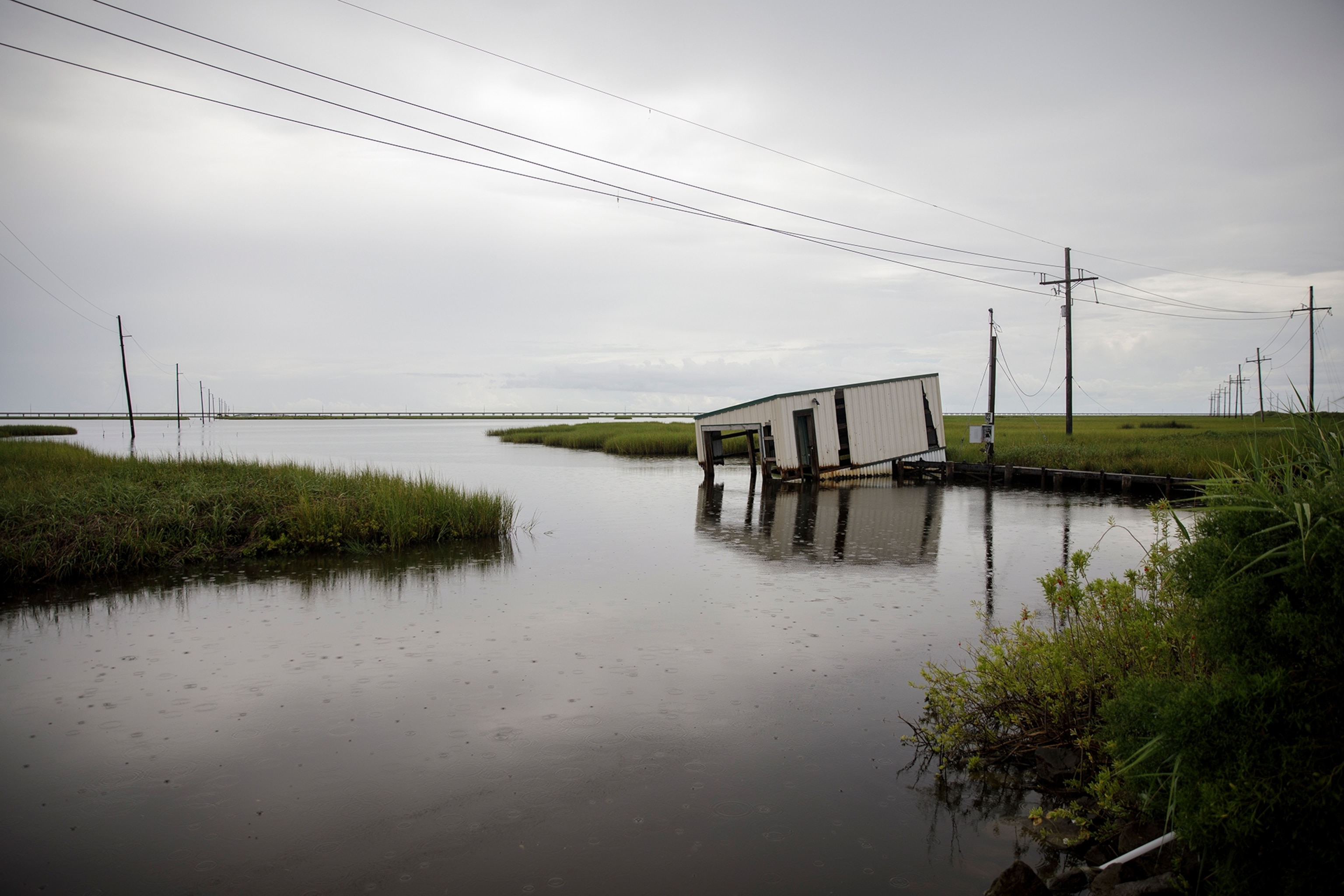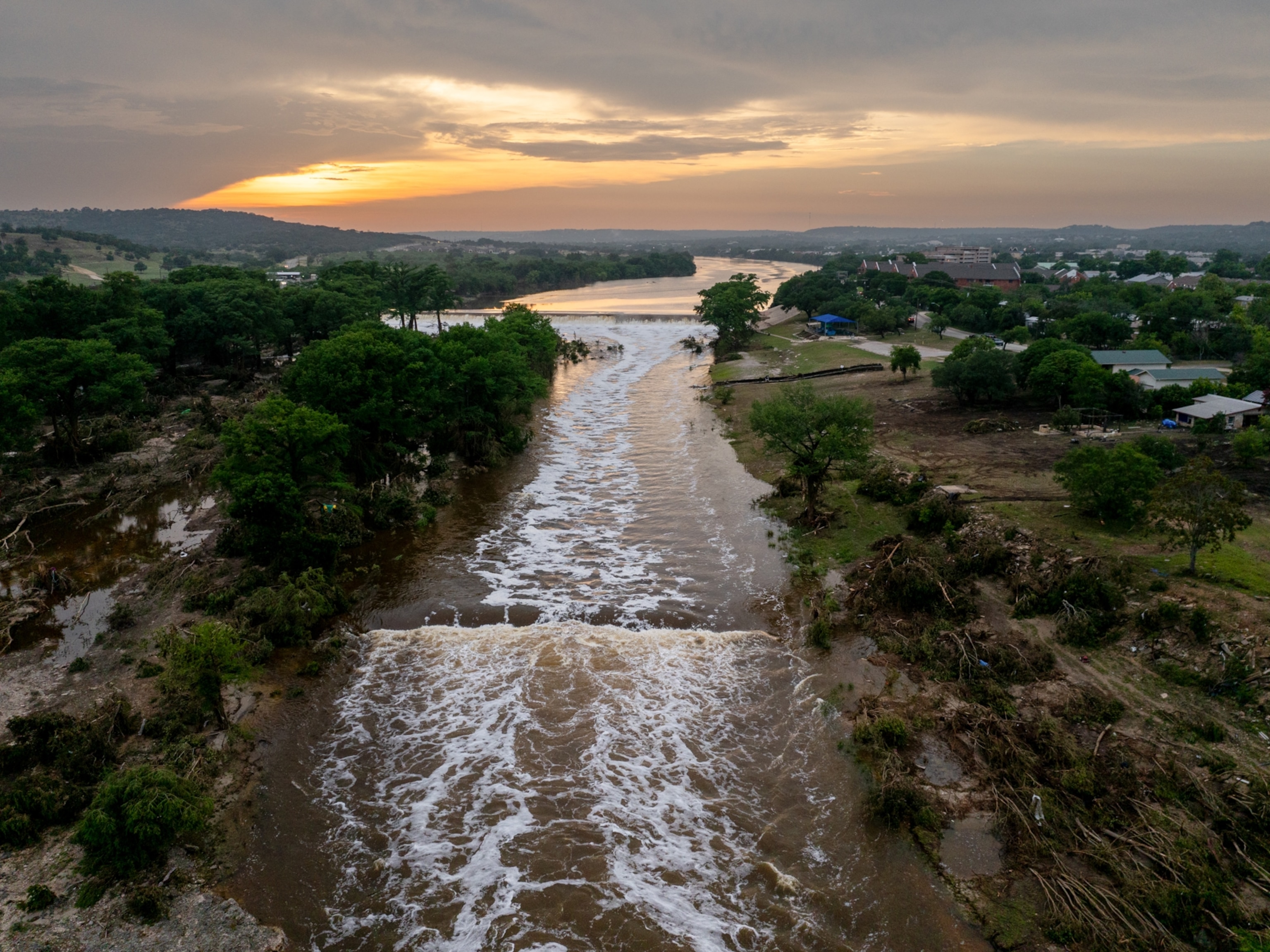On Monday, the United States officially began the process of pulling out of the Paris Agreement, an international deal struck in 2016 that aimed to keep greenhouse gas emissions low enough to keep Earth’s climate-induced warming to under 2 degrees Celsius (3.7 degrees Fahrenheit).
But even if the U.S. stayed in the agreement, finds new research published in Proceedings of the National Academy of Sciences on Monday, there are long-tail, unavoidable consequences for the world’s coastlines. Even if all countries hit their Paris targets by 2030 and then stopped emitting carbon entirely, an unrealistic scenario but a useful thought experiment, the world’s oceans will still slosh higher. Under these idealistic conditions, by 2300—about eight generations away—sea levels around the world will be about 3 feet higher than today, the scientists say.
From the Paris Agreement period alone—between 2015, when the agreement was signed, and 2030, when the stated commitments end—the world will have caused enough warming to drive sea levels about 4.5 inches higher in the future. That’s just from that 15-year stretch.
That doesn’t mean the situation is hopeless, the authors say: far from it. What it means is that decisions made today matter greatly. The quicker emissions drop to essentially zero, they found, the slower the ice will respond—giving coastal cities more time to prepare or move, and giving humans more time to devise solutions to the climate crisis.
“We can clearly see that there’s a massive sea level rise contribution coming from emissions over such a short time frame, just over the Paris period,” says Alexander Nauels, the lead author of the report and a sea level rise expert at Climate Analytics. “But this is risk we can reduce, by all means, if we can, and it seems like we can.”
The Paris period
In 2015, leaders from 195 countries gathered in Paris to sort out an international strategy for addressing climate change. At the meeting they agreed to aim to cut greenhouse gas emissions enough to limit global temperature rise to 2 degrees Celsius (3.7 degrees Fahrenheit) over temperatures in the 1800s, before the Industrial Revolution. It would be even better, the leaders agreed, to keep temperatures from warming past 1.5 degrees.
(See which countries are hitting their targets, and which aren't).
Since then, an avalanche of major scientific reports backed up the 1.5-degree goal, warning that each bit of warming past that threshold would endanger millions more people and make adaptation harder and more expensive. Other science has demonstrated that those thresholds may have been passed already in many parts of the world.
That reality makes the commitments set out in the Paris Agreement even more important to hit.
In the 2015 Agreement (which went into effect in 2016), countries agreed to aim to cut their emissions by some self-determined amount by either 2025 or 2030, and to keep revising those goals every five years until then. These “Nationally Determined Contributions,” or NDCs, varied widely in ambition and feasibility, but marked an important benchmark by which progress could be measured. (See which countries are hitting their targets and which aren’t even trying.)
The Trump Administration has indicated that it intends to withdraw the U.S. from the agreement. November 4 is the first day it can legally begin the process, which takes a year to complete. Already, though, the U.S. is far from hitting its targets.
Emit today, feel the impacts tomorrow
The NDCs were designed to get countries on track to keep air temperatures from rising too much. But it’s not just heat that will affect people in the future. Warmer air means all kinds of other changes to the climate system, from stronger storms and wetter monsoons to rising seas. Many of those impacts are already being felt.
“We’re already seeing the impacts happen much more quickly than we thought we would,,” says Nick Golledge, an ice sheet expert at Victoria University Wellington, in New Zealand, “so we don’t want to get complacent. We are committed to that amount of sea level rise, but there’s still quite a lot we can do about how fast it happens.”
But many of the impacts will take a long time to make themselves felt, and probably can’t be reversed even if the world got on track toward its best-laid plans.
Sea level changes are one of those slow-developing impacts. Even if emissions dropped to nothing and stayed there, sea levels are still going to rise for the next few hundred years. That’s because the world’s ice responds slowly, like a shuddering, awakening bear coming out of hibernation, to the stimulus we apply now.
Over the past few years, scientists have built a robust understanding of how that ice in Greenland, Antarctica, and in the mountains will change, if it’s pushed by hotter temperatures. What they’ve found is that the speed of the change depends strongly on the speed of the warming.
It's adding up, and fast
In this study, the scientists wanted to pin down exactly how much today’s emissions, and today’s major emitters, would affect the future. They designed an experiment that could calculate the sea level rise from specific time periods and from specific emitters. First, they looked at the sum total of all emissions since the preindustrial period through the end of the Paris Agreement targets in 2030 and found the total amount of sea level rise those emissions would cause in the future: about 17 inches by the end of the century, and over 41 inches by 2300, on average.
Then, they broke those numbers down further. Five countries or regions—the U.S., China, India, Russia, and the EU—account for well over half of total emissions today. Each of those countries, therefore, will be responsible for a measurable amount of sea level rise in the future. From just the 15-year Paris Agreement period—2016 to 2030, the time when countries are allegedly doing serious work to rein in emissions—those top five emitters will lock in about 4.5 inches of sea level rise in the future, or 20 percent of 2300’s total.
Over what the authors call the “IPCC period,” starting from 1990, when the Intergovernmental Panel on Climate Change (the IPCC) published its first major report on how humans were affecting Earth’s climate and stretching through 2030, those top five emitters will be personally responsible for over 10 inches of sea level rise by 2030.
In comparison, the planet has seen an average about 8 inches of sea level rise since 1900.
“Even a few inches it doesn’t sound like much, but every bit matters,” says Kristina Hill, a landscape architect and environmental design expert at the University of California, Berkeley. “Especially for things like pollution. You have a pollution lump sitting there in the soil, and it only takes the water intersecting it for that to be a problem, and higher sea levels mean more chance of that.”
Recently, scientists also re-evaluated the maps they’d been using to figure out how global cities will be affected by sea level rise. It turns out that, after correcting the satellite data that shows how high the ground is in many coastal cities worldwide, around 190 million people will live below 2100’s high tide line—about 80 million more than today, and about three times as many as had previously been expected.
For those 190 million people, just a little bit of extra water adds a lot of risk, explains Peter Girard of Climate Central, which did the re-evaluation.
“It’s the difference between damaged property or not, or an overtopped road or a dry one,” he says.
Act now to slow the seas
Although 280 years may feel far away, it’s well within the range of human memory. “I grew up in a country, in the U.K., where we still drove on roads built by the Romans 2,000 years before,” says Golledge. “So let’s not think that a few hundred years is outside of the realm of reality for our infrastructure.”
And the actions that are taken now—in pursuit of the Paris Agreement goals, or even more ambitious emissions reductions goals, will shape the experiences for millions of people in the future.
“The most important factor in continuing to protect people and building new defenses is time,” says Girard. “The more and the sooner global emissions are reduced, the slower the rate of sea level rise will be, and the more time governments and communities around the world will have to evaluate and plan and build defenses.”









